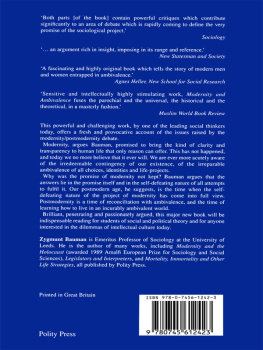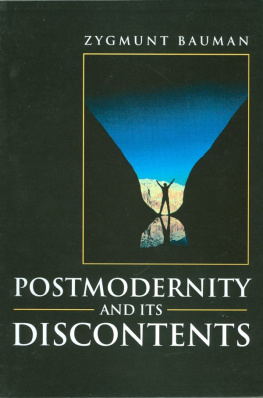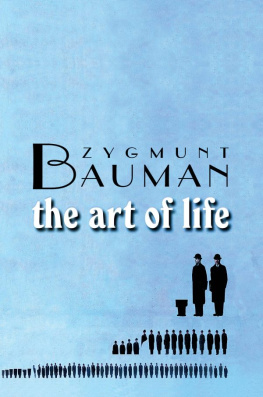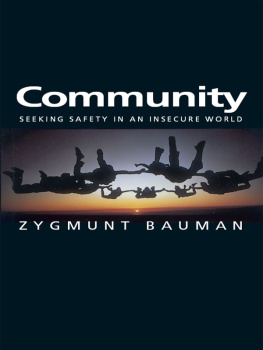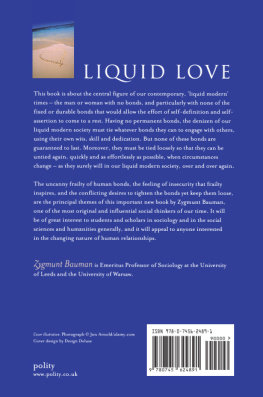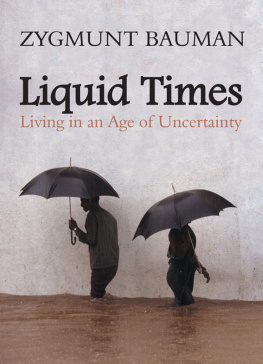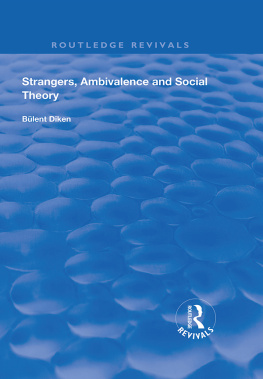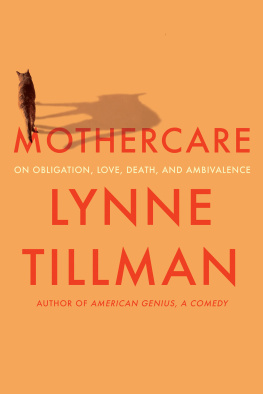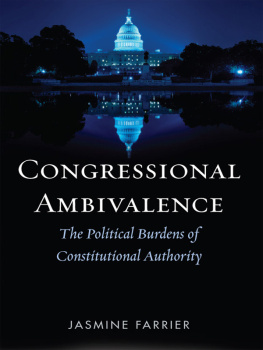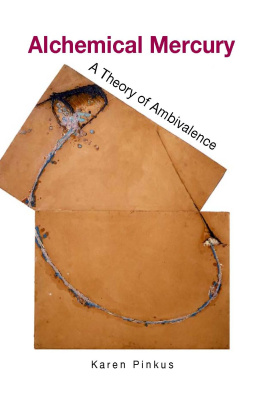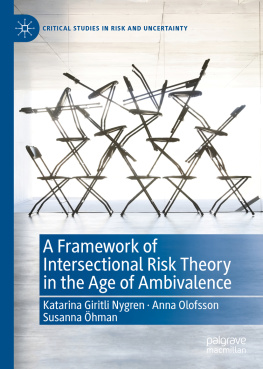Copyright Zygmunt Bauman 1991
The right of Zygmunt Bauman to be identified as author of this work has been asserted in accordance with the Copyright, Designs and Patents Act 1988.
First published in 1991 by Polity Press
in association with Blackwell Publishers Ltd.
First published in paperback 1993
Reprinted 1995,1998,2004,2007
Polity Press
65 Bridge Street
Cambridge CB2 1UR, UK
Polity Press
350 Main Street
Malden, MA 02148, USA
All rights reserved. Except for the quotation of short passages for the purposes of criticism and review, no part of this publication may be reproduced, stored in a retrieval system, or transmitted, in any form or by any means, electronic, mechanical, photocopying, recording or otherwise, without the prior permission of the publisher.
Except in the United States of America, this book is sold subject to the condition that it shall not, by way of trade or otherwise, be lent, re-sold, hired out, or otherwise circulated without the publishers prior consent in any form of binding or cover other than that in which it is published and without a similar condition including this condition being imposed on the subsequent purchaser.
ISBN: 978-0-7456-0573-9
ISBN: 978-0-7456-1242-3 (pbk)
A CIP catalogue record for this book is available from the British Library.
Typeset in 10 on 12 pt Garamond
by Acorn Bookwork
Printed and bound in Great Britain by
Marston Book Services Limited, Oxford
For further information on Polity, visit our website: www.polity.co.uk
Acknowledgements
At various stages of my work I benefited from insightful critical comments on various chapters or fragments of chapters of this book, offered by David Beetham, Bryan Cheyette, Agnes Heller, Irving Horowitz, Richard Kilminster, Ralph Miliband, Stefan Morawski, Paul Piccone, Ritchie Robertson, Gillian Rose, Nico Stehr, Dennis Warwick, Wlodzimierz Wesolowski, Jerzy J. Wiatr and many other colleagues and friends. I am deeply grateful for their help. Anthony Giddenss thorough and perceptive criticism had a decisive role in the final shaping of the project. Once again I am pleased to be able to thank David Roberts for his splendid editorial job.
In writing this book, I used some material contained in my various articles and reviews published in Jewish Quarterly, Marxism Today, Sociological Review, Sociology, Telos and Theory, Culture and Society.
One has to wait till the end of history
to grasp the material in its determined totality
Wilhelm Dilthey
The day that there will be a reading of the Oxford card,
the one and true reading,
will be the end of history
Jacques Derrida
Someone who writes nothing but postcards
will not have Hegels problem
of how to end his book
Richard Rorty
Introduction: The Quest for Order
Ambivalence, the possibility of assigning an object or an event to more than one category, is a language-specific disorder: a failure of the naming (segregating) function that language is meant to perform. The main symptom of disorder is the acute discomfort we feel when we are unable to read the situation properly and to choose between alternative actions.
It is because of the anxiety that accompanies it and the indecision which follows that we experience ambivalence as a disorder and either blame language for lack of precision or ourselves for linguistic misuse. And yet ambivalence is not the product of the pathology of language or speech. It is, rather, a normal aspect of linguistic practice. It arises from one of the main functions of language: that of naming and classifying. Its volume grows depending on the effectivity with which that function is performed. Ambivalence is therefore the alter ego of language, and its permanent companion indeed, its normal condition.
To classify means to set apart, to segregate. It means first to postulate that the world consists of discrete and distinctive entities; then to postulate that each entity has a group of similar or adjacent entities with which it belongs, and with which together it is opposed to some other entities; and then to make the postulated real by linking differential patterns of action to different classes of entities (the evocation of a specific behavioural pattern becoming the operative definition of the class). To classify, in other words, is to give the world a structure: to manipulate its probabilities; to make some events more likely than some others; to behave as if events were not random, or to limit or eliminate randomness of events.
Through its naming/classifying function, language posits itself between a solidly founded, orderly world fit for human habitation, and a contingent world of randomness, in which human survival weapons memory, the capacity for learning would be useless, if not downright suicidal. Language strives to sustain the order and to deny or suppress randomness and contingency. An orderly world is a world in which one knows how to go on (or, what amounts to the same, one knows how to find out and find out for sure how to go on), in which one knows how to calculate the probability of an event and how to increase or decrease that probability; a world in which links between certain situations and the effectivity of certain actions remain by and large constant, so that one can rely on past successes as guides for future ones. Because of our learning/memorizing ability we have vested interests in maintaining the orderliness of the world. For the same reason, we experience ambivalence as discomfort and a threat. Ambivalence confounds calculation of events and confuses the relevance of memorized action patterns.
The situation turns ambivalent if the linguistic tools of structuration prove inadequate; either the situation belongs to none of the linguistically distinguished classes, or it falls into several classes at the same time. None of the learned patterns could be proper in an ambivalent situation or more than one of the learned patterns could be applied; whatever is the case, the outcome is the feeling of indecision, undecidability, and hence loss of control. The consequences of action become unpredictable, while randomness, allegedly done away with by the structuring effort, seems to make an unsolicited come-back.
Ostensibly, the naming/classifying function of language has the prevention of ambivalence as its purpose. Performance is measured by the neatness of the divisions between classes, the precision of their definitional boundaries, and the unambiguity with which objects may be allocated to classes. And yet the application of such criteria, and the very activity whose progress they are to monitor, are the ultimate sources of ambivalence and the reasons why ambivalence is unlikely ever to become truly extinct, whatever the amount and the ardour of the structuring/ordering effort.
The ideal that the naming/classifying function strives to achieve is a sort of commodious filing cabinet that contains all the files that contain all the items that the world contains but confines each file and each item within a separate place of its own (with remaining doubts solved by a cross-reference index). It is the non-viability of such a filing cabinet that makes ambivalence unavoidable. And it is the perseverance with which construction of such a cabinet is pursued that brings forth ever new supplies of ambivalence.
Classifying consists in the acts of inclusion and exclusion. Each act of naming splits the world into two: entities that answer to the name; all the rest that do not. Certain entities may be included into a class made a class only in as far as other entities are excluded, left outside. Invariably, such operation of inclusion/exclusion is an act of violence perpetrated upon the world, and requires the support of a certain amount of coercion. It can hold as long as the volume of applied coercion remains adequate to the task of outbalancing the extent of created discrepancy. Insufficiency of coercion shows itself in the manifest reluctance of entities postulated by the act of classification to fit into assigned classes, and in the appearance of entities under- or over-defined, with insufficient or excessive meaning sending no readable signals for action, or sending signals that confuse the recipients for being mutually contradictory.

